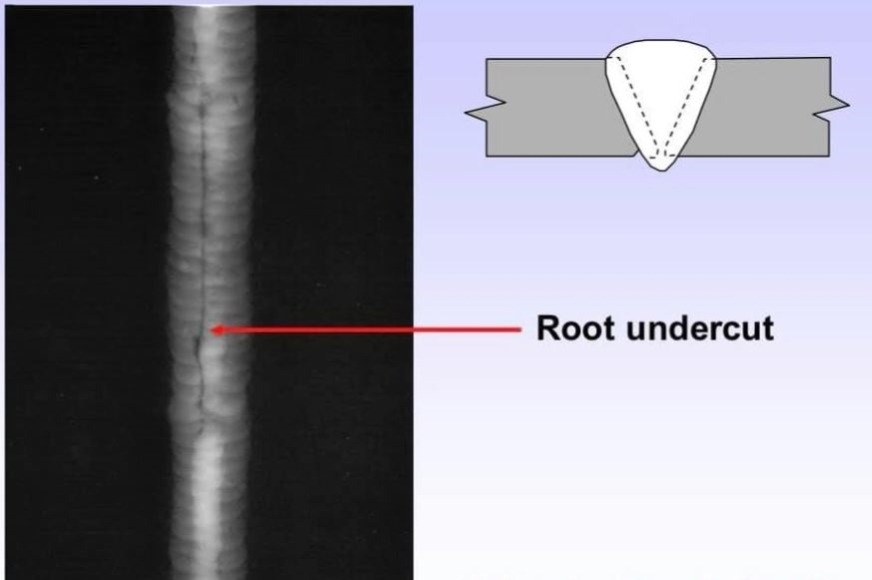Preventing Weld Undercut: Proven Methods Every Welder Should Know
Preventing Weld Undercut: Proven Methods Every Welder Should Know
Blog Article
Grasping the Art of Welding: Exactly How to Avoid Undercut Welding Issues for Flawless Manufacture Outcomes
Efficiency and precision are extremely important worldwide of welding, where even the smallest blemish can compromise the structural honesty of a fabricated item. One typical difficulty that welders face is undercutting, a flaw that can weaken a weld joint and lead to expensive rework. By understanding the root triggers of undercut welding and applying effective strategies to avoid it, welders can elevate their craft to new levels of quality (Preventing weld undercut). In the search of flawless fabrication results, grasping the art of welding to stay clear of undercut concerns is not simply an ability yet a necessity for those pursuing excellence in their job.
Recognizing Undercut Welding

To stop undercut welding, welders need to make sure correct welding specifications, such as readjusting the current, voltage, traveling rate, and preserving the proper electrode angle. Additionally, utilizing the ideal welding method for the certain joint configuration is vital. Using weaving motions or backstepping methods can aid make sure appropriate weld metal deposition and decrease the likelihood of undercut formation. Routine examination of welds during and after the welding process is likewise vital to capture any type of undercut very early and make essential adjustments to avoid more issues. Preventing weld undercut. By understanding the reasons for undercut welding and executing preventative procedures, welders can achieve top notch, structurally audio welds.
Causes of Undercut in Welding
Comprehending the elements that add to undercut in welding is essential for welders to produce premium, structurally sound welds. Undercutting occurs when the weld steel does not appropriately load the groove created in between the base metal and the previously transferred weld steel. Several factors can cause damage in welding. One common reason is extreme warmth input. Welding at heats for extensive periods can result in the base steel melting more than desired, resulting in undercut. Poor welding inaccurate or current welding rate can also add to damage. Not enough current might not provide adequate warm to thaw the base and filler steels adequately, while too much speed can prevent correct fusion, creating undercut. Furthermore, inappropriate electrode angles or incorrect lantern manipulation methods can create locations of low weld steel deposition, promoting undercut. Recognizing these causes and applying appropriate welding techniques can assist prevent undercutting concerns, making sure strong and sturdy welds.
Strategies to Prevent Undercutting

To reduce the risk of undercutting in welding, welders can employ strategic welding techniques aimed at enhancing the top quality and honesty of the weld joints. Additionally, using the proper welding strategy for the certain joint setup, such as weave or stringer beads, can add to reducing damaging.
Utilizing back-step welding techniques and controlling the weld bead profile can additionally help disperse warmth uniformly and lessen the risk of undercut. Normal inspection of the weld joint during and after welding, as well as applying quality assurance actions, can aid in finding and addressing damaging problems immediately.
Importance of Proper Welding Specifications
Picking and maintaining appropriate welding specifications is crucial for achieving successful welds with very little flaws. Welding criteria describe variables such as voltage, current, travel speed, electrode angle, and shielding gas flow price that directly affect the welding procedure. These parameters should be very carefully readjusted based on the sort of product being bonded, its density, and the welding strategy used.
Proper welding specifications make certain the right amount of heat is put on melt the base metals and filler material uniformly. If the parameters are set too high, it can lead to excessive heat input, causing distortion, burn-through, or spatter. On the other hand, if the criteria are also low, incomplete fusion, absence of infiltration, or damaging may occur.
High Quality Guarantee in Welding Procedures

Conclusion
To conclude, grasping the art of welding needs an extensive understanding of undercut welding, its reasons, and methods to avoid it. By ensuring correct welding specifications and executing quality control techniques, perfect fabrication outcomes can be achieved. It is crucial for welders to consistently pursue quality in their welding operations to avoid undercut concerns and create premium welds.
Undercut welding, an usual issue in welding processes, takes place when the weld steel doesn't properly load the groove and leaves a groove or depression along the bonded joint.To prevent undercut welding, welders must make sure proper welding specifications, such as adjusting the present, voltage, traveling speed, and keeping the appropriate electrode angle. Poor welding current or inaccurate welding rate can additionally contribute to damage.To mitigate the risk of damaging in welding, welders can use tactical welding methods intended at enhancing the high quality and honesty of the weld joints.In conclusion, mastering the art of welding needs a comprehensive published here understanding of undercut welding, its causes, and strategies to stop it.
Report this page